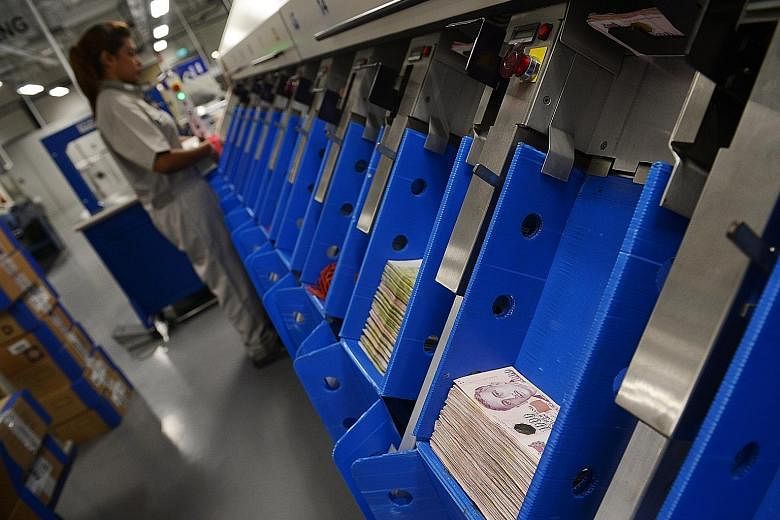Singapore's central bank asserted that the country "does not manipulate its currency for export advantage", after the United States added Singapore to its currency watch list, which has eight other countries including China.
The US will monitor these countries to see if they are deliberately devaluing their currencies to gain a trade advantage against the world's largest economy.
Singapore's central bank strongly rebutted the suggestion, and economists said that the short-term impact on the Republic's economy will be limited, although the move will mean heightened scrutiny from the US.
They also pointed out that, in fact, Singapore runs a trade deficit with the US.
In a statement yesterday, the Monetary Authority of Singapore (MAS) said that the exchange rate here is used to keep consumer price inflation low and stable.
"MAS does not and cannot use the exchange rate to gain an export advantage or achieve a current account surplus.
"A deliberate weakening of the Singapore dollar would cause inflation to spike and compromise MAS' price stability objective," it added.
In the latest currency report released on Tuesday, the US Treasury tightened the criteria for its watch list and expanded its coverage from its 12 largest trading partners to those which trade more than US$40 billion (S$55 billion) with the US.
Countries with a current account trade surplus equivalent to 2 per cent of gross domestic product will now be considered for the list, down from 3 per cent previously.
Another criterion of a trade surplus of at least US$20 billion with the US remains unchanged, while the definition of what constitutes a persistent intervention in the foreign exchange market is narrowed to net foreign currency purchases of more than 2 per cent of GDP in six out of 12 months, down from eight out of 12 months.
Singapore, having met two out of the three criteria - on its current account surplus and market intervention - was placed on the watch list.
The US Treasury noted in its report: "Singapore runs one of the largest current account surpluses in the world as a share of GDP at 17.9 per cent in 2018." It also estimated that Singapore made net foreign currency purchases of at least US$17 billion last year, equivalent to 4.6 per cent of GDP - more than double its threshold.
The report urged Singapore to undertake reforms to lower its high savings rate and boost low domestic consumption to help narrow its large and persistent external surpluses.
Although being on the watch list does not result in any immediate punitive measures from the US, economists say the markets may be a little jittery.
But overall, said OCBC economist Selena Ling, the impact on the Singapore economy looks to be limited in the short term.
DBS Bank foreign exchange strategist Philip Wee noted that the Singapore dollar further weakened to above 1.38 against the US dollar yesterday. "The market does not appear to agree with America's decision to put Singapore on its currency manipulation monitor list," he said.
When a country is put on the list, the implicit indication is for the country's currency to strengthen against the US dollar, he explained. Yet, the market went the other way, reflecting the sentiments on the trading floor.
Beyond the initial surprise, CIMB Private Banking economist Song Seng Wun does not think that the US action would have any impact on Singapore at all.
He pointed out that Singapore had a trade deficit of nearly US$6 billion with the US last year, meaning that Singapore buys more goods than it sells to the US.
It is counter-intuitive to put Singapore on the watch list as it is primarily meant to target countries that enjoy a trade surplus with the US, he said.
However, the US Treasury has stated that once they are added to the list, countries will remain there for at least two consecutive reports to ensure that any improvement is durable.
Ms Ling said the move implies greater scrutiny from the US.
"The worst-case scenario if a country is labelled a currency manipulator is that the US Commerce Department may consider imposing anti-subsidy duties on products from countries that have undervalued currencies.
"Obviously, the current ongoing US-China trade and tech tensions appear to have raised the potential stakes," she said.
Despite the ongoing trade war, the US has spared China the currency manipulator label, avoiding a further escalation of tensions.
Chinese Foreign Ministry spokesman Lu Kang said yesterday that this conclusion is "in line with the common understanding of the international community", and he urged the US to "respect market rules and not politicise the currency issue".


